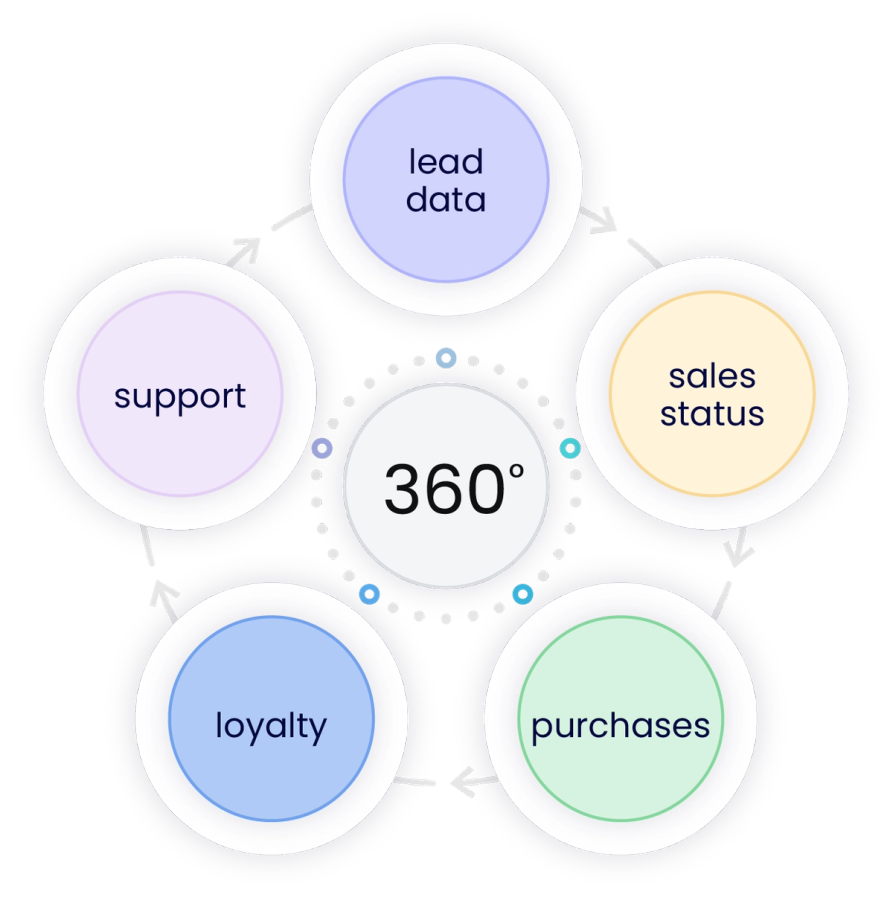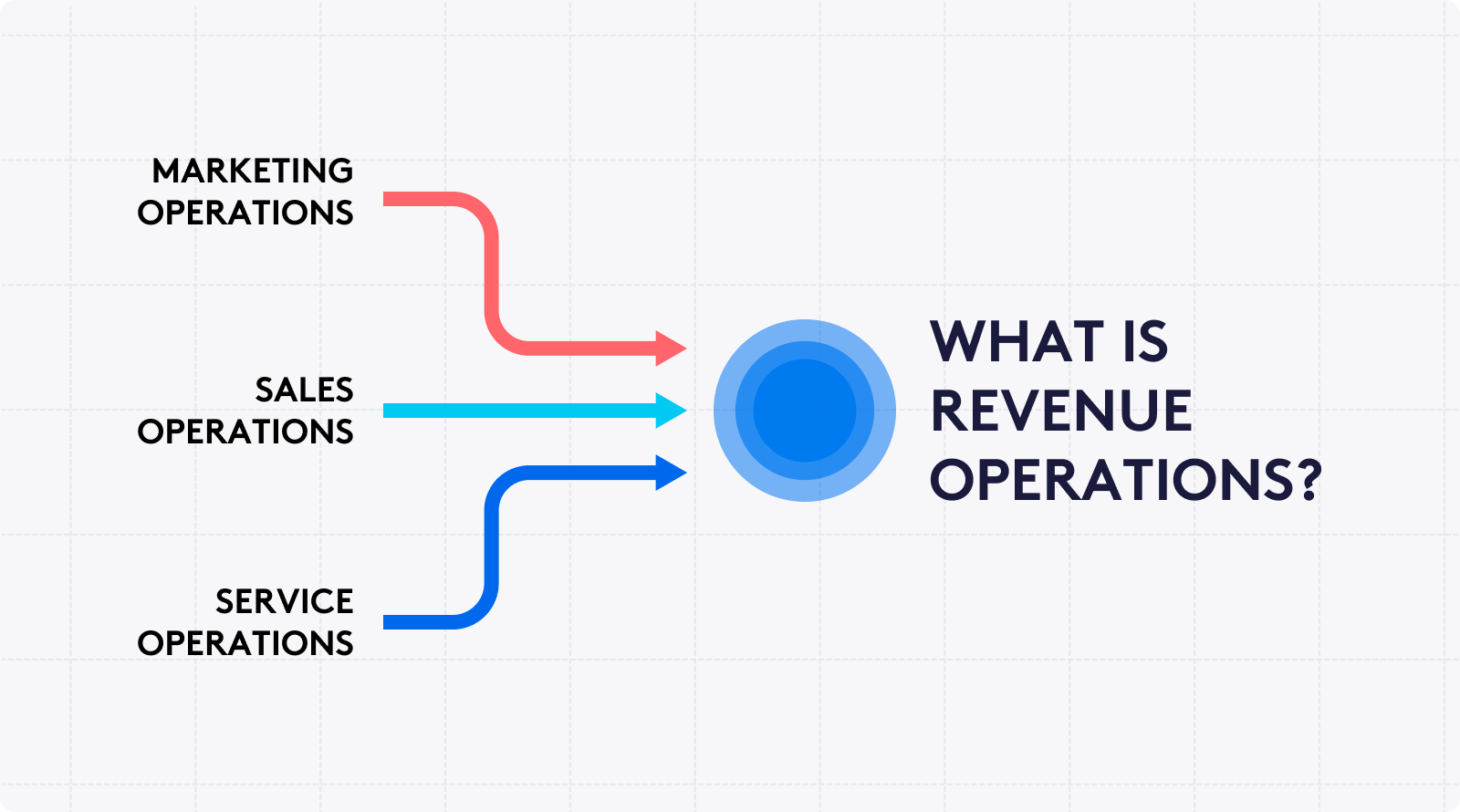Evolving buyer expectations have companies investing heavily in revenue operations to increase new customer acquisition and retention. Today’s buyers are tired of the traditional B2B sales cycle with 77% claiming their last purchase was overly complex and difficult. So what are your prospects looking for along their customer journey?

Modern B2B buyers are growing frustrated with typical sales cycles. Image courtesy Gartner.
B2B buyers crave a B2C-like experience with every vendor evaluation. That means fast response times, personalized engagement, and quick ROI. If you can deliver on this experience, you can recapture significant revenue for your business - up to 25% annually. In fact, 78% of prospects buy from the first company to respond to their inquiry, and personalized versus generic interactions result in a 20% increase in sales conversions.
To achieve a seamless customer experience, sales, marketing, and customer success leaders must rethink their current operating models to streamline processes such as lead processing, order-to-cash, customer onboarding, and upselling/cross-selling motions. In comes revenue operations.
Revenue operations, or RevOps, is an emerging function that breaks down silos between marketing, sales, and customer success operations. Acting as a central hub for customer information, the RevOps approach focuses on customer acquisition, recurring revenue, customer churn, satisfaction, and other customer-centric metrics to provide a 360-degree view of your customers. - from initial engagement to post-sale needs.

A 360-degree customer view is a comprehensive collection of customer data from each step in the customer lifecycle.
But it’s not without challenges. RevOps teams must oversee several different processes spanning multiple systems and applications. The biggest barriers to succeeding with RevOps include:
- Integration: Marketing automation platforms, CRMs, ERPs. Customer data often lives in various forms across disparate systems, making it difficult to create a single source of truth for revenue teams.
- Limited resources: To solve data and integration challenges, RevOps teams must often rely on an already overburdened IT department. In fact, demand for developer talent doubled in 2021.
- Culture: It may be a surprise the biggest barrier to implementing RevOps is company culture, with teams often resisting change that disrupts current operations, or require them to learn new tools or skills.
If any of those issues resonate with you, you’ve come to the right place. In this series of blogs, we’ll share how to get started with revenue operations – from defining the approach and understanding the customer journey to covering the essential tools, building your team, crafting a strategy, and tips for success.
What is revenue operations?
Revenue operations brings together sales, marketing, and customer success processes in order to maximize revenue growth and predictability. From a high level, it involves optimizing the customer experience, streamlining processes through automation, improving data accuracy, creating accurate forecasts and reports, and developing pricing strategies.
While companies that invest in RevOps grow 3x faster than those that don’t, it is a complex process that requires careful planning and coordination between departments to ensure success. Let’s look at where revenue operations is driving the most value for organizations as well as the biggest obstacles standing in the way.
Top 5 benefits of revenue operations
- Improved customer acquisition and retention: Since RevOps teams are focused on crafting a frictionless customer journey, they can more easily identify gaps in your sales and marketing processes, and implement strategies to boost acquisition and retention.
- Increased revenue: Studies show that companies with a revenue operations team experience 36% more revenue growth and up to 28% more profitability. By maximizing the efficiency and effectiveness of sales, marketing, and customer success processes, a revenue operations team can supercharge revenue growth.
- Enhanced coordination and collaboration: Every year, companies lose up to half a million dollars due to poor integration – disconnected applications and systems resulting in data silos. By breaking down silos between sales, marketing, and customer success systems through an integration and automation platform, a revenue operations team can improve coordination and collaboration across your organization.
- Better decision-making: For any RevOps team, their CRM should be their north star. Feeding critical customer data from MarTech and CS applications into the CRM and automating manual CRM processes is a day-one goal for any RevOps team. By providing a single source of truth for customer data and insights, a revenue operations team can help business leaders make smarter, more informed decisions about where to invest their resources.
- Increased efficiency: With the average tech stack growing larger and more complex, employees are spending an inordinate amount of time entering data and updating records. In fact, workers lose 62% of their workday to these manual processes. By streamlining processes and eliminating manual work, a revenue operations team can help businesses operate more efficiently and free up time and resources for more strategic initiatives.
Top 5 challenges of revenue operations
- Getting buy-in and support from other teams: According to a recent study, the biggest barrier to adopting RevOps is related to company culture. Revenue operations teams may face resistance or skepticism from other teams who are used to operating in silos.
- A study from Leandata shows culture as the most pressing challenge companies face when moving to revenue operations.
- Ensuring data integrity and accuracy: Revenue operations teams rely on accurate and up-to-date customer data. But when data is spread out across multiple applications, it’s impossible to have a single source of truth.
- Managing multiple tasks and systems: The typical tech stack for a mid-market organization is 185 applications. To bridge application gaps between sales, marketing, and CS, a revenue operations team must overcome the challenges of integrating systems, syncing data, and automating processes, making a low-code automation platform critical for success.
- Prioritizing and balancing competing objectives: Since RevOps teams focus on the entire customer journey, prioritization becomes a huge challenge. They must balance the need to drive revenue growth with the need to ensure customer satisfaction and retention.
- Managing change and adapting to new technologies: As we mentioned, RevOps is a relatively new business function and continues to evolve. Teams must remain agile and able to adapt to new technologies and approaches in order to remain effective.
Why revenue operations is the key to growth for organizations
Revenue operations is a relatively new concept, emerging in the early 2010s in response to evolving buyer expectations. While a staggering 95% of businesses agree that delivering a seamless customer experience across the customer journey is the key to unlocking revenue growth, many organizations still struggle to align their operations teams across marketing, sales, and customer success.

The same study from Leandata shows an overwhelming consensus that a frictionless buyer experience is a critical revenue driver.
However, the typical organization has the people and processes associated with the customer journey spread across three different business teams: marketing operations, sales operations, and customer success operations. To better understand revenue operations, you must first learn the main roles and responsibilities of these three functions.
Marketing Operations
Marketing operations, or MOps, refers to the people, processes, and tools that drive a business’s marketing strategy. The marketing operations team is responsible for planning, executing, and measuring the effectiveness of marketing campaigns.
The marketing operations function may differ from company to company, but MOps professionals usually focus on the following business processes:
- Lead lifecycle management – the process of managing a lead or contact from their first interaction with your business to the time they (hopefully) become a customer. MOps teams may focus on implementing automated processes such as lead routing, data cleansing, lead enrichment, and lead-to-account matching to streamline and optimize the lead pipeline.
- Account-based marketing – the process of identifying and targeting specific accounts or organizations through personalized marketing campaigns. MOps teams may focus on integrating account-based marketing tools with the rest of the tech stack to automate lead scoring and synchronize targeted campaigns.
- Product-led growth – a business strategy where the product itself is the main driver of user acquisition, retention, and expansion. MOps teams may focus on analyzing customer usage data to identify the product’s target market, as well as tracking the effectiveness of product-led growth initiatives.
Sales Operations
The sales operations team is responsible for supporting and enabling the sales team and optimizing the sales process. The main goal of sales ops is to improve the efficiency and effectiveness of the front-line sales team by analyzing data and implementing technologies that ultimately result in increased revenue for the company.
The sales operations function may differ from company to company, but sales ops teams usually focus on the following business processes:
- Quote-to-cash (Q2C) – the steps your sales team takes to close a deal. The process includes preparing a quote, CPQ (configure, price, quote), drafting a proposal, contracting, fulfilling the order, invoicing, processing payment, and reporting and analysis.
- Forecast accuracy – the process of measuring how closely a company’s sales forecast aligns with actual sales results. Sales ops may integrate their CRM and Business Intelligence platform for customer data analysis in order to improve forecast accuracy.
- Territory management – the process of dividing a sales region into smaller, manageable areas and assigning sales teams to specific territories. It’s often up to sales ops to define territory boundaries, assign salespeople, and measure their performance.
Customer Success Operations
The customer success team is responsible for ensuring that customers are satisfied with the products or services they have purchased. This includes providing support, training, and guidance to customers, as well as identifying, aggregating, and delivering actionable customer information in order to create a complete view of the customer post-sales. The ultimate goal for CS Ops teams is to increase customer satisfaction, retention, and advocacy.
Customer success operations teams usually focus on the following areas:
- Ensuring high CSAT – Customer satisfaction, or CSAT, is critical for improving retention rates. Customer success teams will work to create a frictionless user onboarding experience and provide timely customer support to increase CSAT.
- Preventing churn – There are many reasons why a customer stops using a product. For CS Ops teams, analyzing product usage metrics, collecting customer feedback, and anticipating customer expectations is necessary for preventing attrition.
- Driving renewals and upsells – As main revenue drivers, renewals and upsells are top priorities for CS Ops teams. To help expand existing customer accounts, teams will focus on fostering strong customer relationships, analyzing accounts to identify opportunities for upsells, and creating incentive strategies such as bundling discounts.
RevOps is the alignment of marketing, sales, and customer success operations
In a recent study, only 29% of leaders said their teams were fully aligned. More often than not, these functions operate independently, with little coordination or communication between them. Even worse, the tools they use are often poorly integrated (if at all). Customer data must be manually moved into different systems - leading to an incomplete or incorrect view of each customer.
And that’s where RevOps can be a game-changer. Revenue operations aims to break down silos between these functions and provide a more comprehensive view of the customer journey.

Revenue operations is the alignment of marketing, sales, and customer service operations within an organization.
With a low-code integration and automation platform connecting systems across these functions, a RevOps team can deliver a 360-degree view of the customer and help optimize processes across the lead and customer lifecycle - all without relying on IT. Businesses can then better understand and meet the evolving needs and expectations of modern buyers, improve customer acquisition and retention efforts, and supercharge revenue growth.
So with a fully-aligned team and seamlessly connected tech stack, there’s no limit to what a revenue operations team can do. Like responding to leads 3x faster. Or boosting your Q2C velocity by 25%. Let’s take a closer look at the day-to-day tasks of a successful revenue operations team.
What do revenue operations teams do?
The job of a revenue operations team is to ensure all resources – teams and the tools they work with – are aligned toward the same goal: maximizing revenue.
In a nutshell, revenue operations teams are responsible for optimizing revenue from all revenue sources by providing a unified approach to revenue management, including strategy, operations, technology, and analytics. That entails coordinating and executing strategies such as integrating marketing, sales, and CS applications and setting up automated processes to drive revenue growth, increase customer satisfaction (CSAT), and improve operational efficiency.
While RevOps teams focus on a wide range of people and processes, their main duties include the following:
Data analysis: RevOps teams analyze data from multiple sources: sales data from your CRM, marketing data from your MAP (Marketing Automation Platform), and customer data from your ERP on top of any other revenue-related data from applications in your company’s tech stack. The goal of the RevOps team is to consolidate and analyze this data to create a complete and comprehensive view of the customer in order to understand trends and identify opportunities for growth.
Process optimization: The best way to positively impact revenue is to optimize the processes that directly affect it. But bloated tech stacks and misaligned teams lead to inaccurate data and overly complex processes that result in lost revenue. The job of the RevOps team is to identify and optimize the key processes that directly impact revenue by eliminating data silos and automating processes. And how can they achieve this? By implementing technologies such as an integration and automation platform.
Technology implementation: CRMs, MAPs, ERPs. Plus any of the 14,000+ revenue-related applications in your tech stack. RevOps teams often implement and maintain an inordinate amount of applications. But the most important tool in the RevOps tech stack? An integration and automation platform that lets them connect different systems and automate processes across them.

The 2024 marketing technology landscape consists of over 14,000 marketing solutions. Image courtesy Chief Martec.
Budget management: A no-brainer. Since RevOps teams are focused primarily on maximizing revenue, they must work to ensure that the business’s resources are allocated effectively to achieve its revenue goals. RevOps teams are often responsible for forecasting revenue, creating and monitoring budgets, and making adjustments as needed to ensure the business stays on track.
Collaboration: The final no-brainer. Since RevOps is literally the alignment of marketing, sales, and customer success teams, there is a high level of collaboration involved to ensure all efforts are working towards the common goal of driving revenue.
Now that you get the gist of revenue operations, you can begin to think about the necessary tools for a best-in-class RevOps tech stack, building a world-class RevOps team, and crafting effective RevOps strategies - all of which we’ll cover in this series.
How Tray can power your RevOps machine
The Tray platform lets RevOps teams create a frictionless customer journey by seamlessly flowing data across marketing, sales, and service tech stacks and automating mission-critical tasks such as lead routing, quote-to-cash, user provisioning, and more. RevOps teams everywhere are leveraging the power of automation to drive revenue growth and deliver the customer experience their prospects and customers expect – all at scale. To learn more about how Tray can power your RevOps machine, watch a demo.




